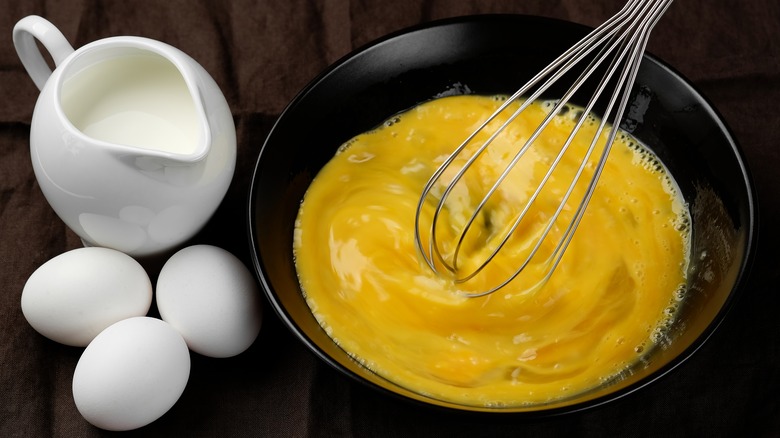How To Finally Stop Runny Omelets With Just One Extra Step
The perfect omelet is so much more than just what you hope for at your local diner during a lazy Saturday morning breakfast. It is, by many chefs' personal accounts, one of the most important foods by which they judge themselves. Fluffy, light, without a spot of brown nor the dreaded runny middle.
Avoiding the runny middle is easier than you might think, and it just involves a bit of steam. Eggs are extremely delicate, and though it might seem at first that adding more heat directly to the pan is the way to go, that will only lead to burning the outside of the omelet. The exterior will be tough and possibly browned in spots while the interior will still be runny and displeasing at best, raw at worst.
Instead, take a few helpful tips and let a bit of steam heat do the trick of cooking a perfect omelet.
This tip will help you make a perfect omelet
The perfect omelet is neither runny nor rubbery. It requires the exterior to be barely cooked while the interior is solid and soft, not runny, liquidy, and — sorry, there really is not any other word for it — gross. However, that liquidy egg can work for you if you let it.
As you set the whisked eggs into the pan over low heat, let the bottom start to set and cook. Do not agitate it too much, as you want the bottom to set, unlike a scramble. After a minute or so, the bottom will be pretty ready to go, but the top will still be loose. Put a lid on the pan for about 30 seconds and let the steam from the liquid egg gently bathe the omelet in heat and finish cooking it.
It is like a self-contained water bath that cooks the omelet through without turning up the heat or taking too much time, both of which could render the rest of the omelet tough and overcooked.
Now add some flavor to your omelet
Now that the ideal way to cook the omelet is taken care of, it is time to focus on the flavors of the omelet. One of the most delightful things about omelets is how versatile they are, ideal for breakfast, lunch, or even a light dinner. They are at home with a crisp salad, freshly fried potatoes, or a couple of slices of marble rye bread smeared with butter and jam.
When it comes to adding ingredients to the omelet, the only limit is what is in the refrigerator. Smoked salmon, fresh herbs, soft or hard cheese, and any manner of sausage are all at home. Are leftover roasted peppers or cherry tomatoes about to go bad? Throw them in the omelet and see them brought back to life.
Now that every omelet is guaranteed to be the ideal texture, it is possible to try and enjoy all these iterations and more.


